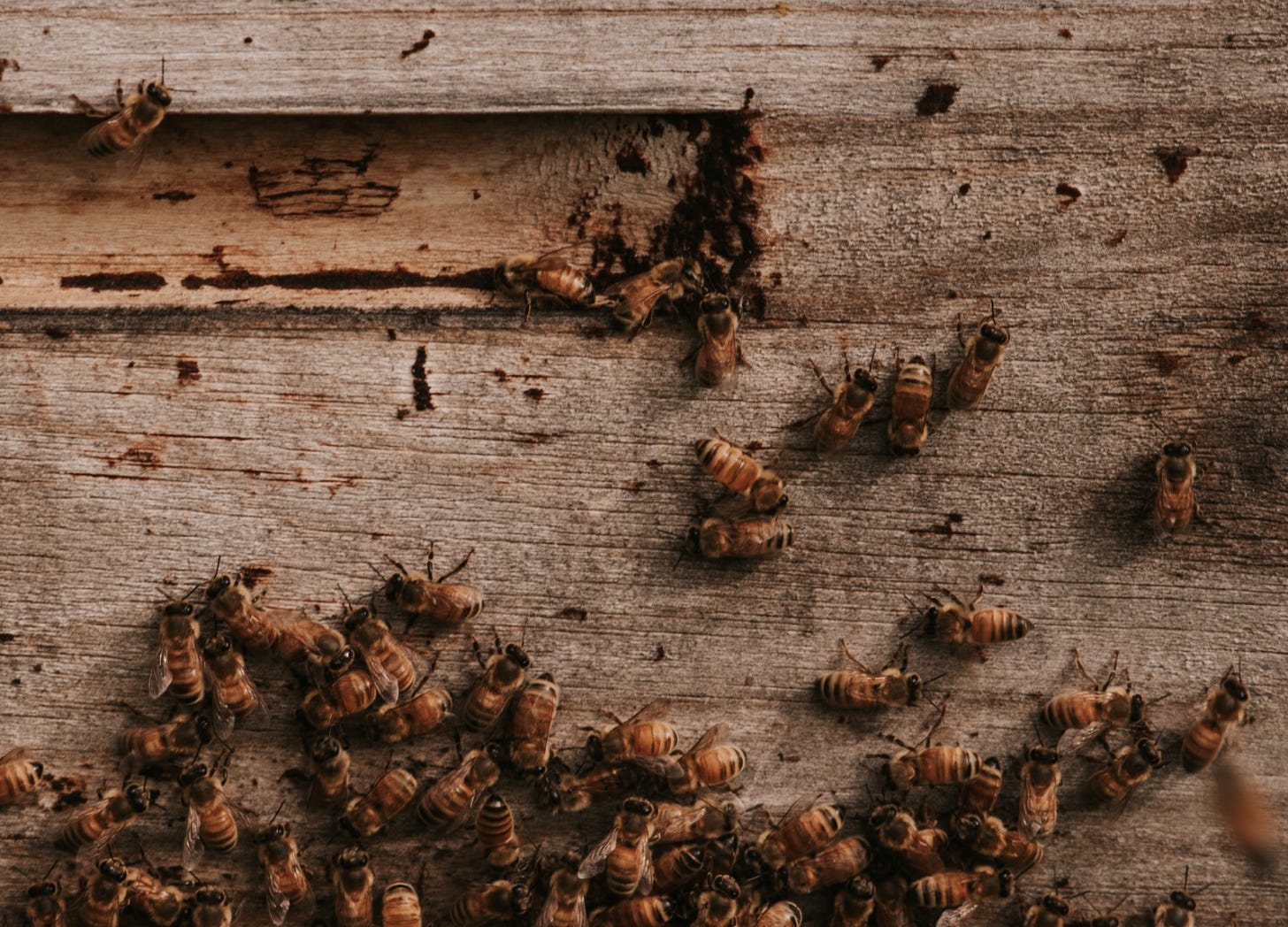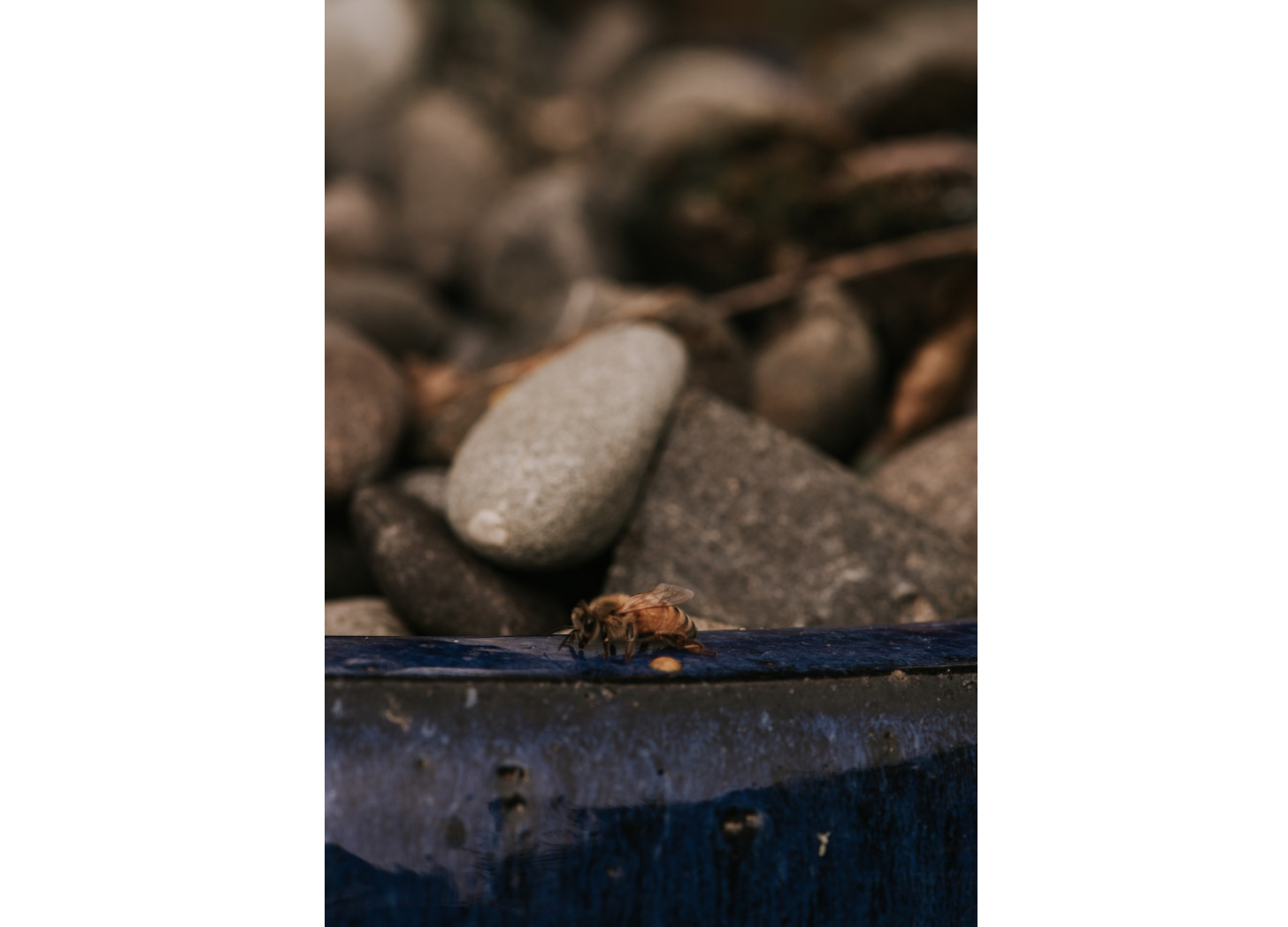So many bees
Hive check No.2
I gently pull the frame from the box and hold it up only to immediately drop it. As it slips from my hands I watch as bees sprinkle down my leg and I do a silent prayer that I am bee tight in my suit, that my gumboots are tucked into my bee suit and not the other way around. I look down and bees have scattered across my boot and the grass surrounding my feet. Already they are orientating and marching back to their home and their queen. A quietly strong instinct that I don’t understand. I can only watch and admire their determination and focus. It’s my first day in the hives for the season and I am shaking off the winter clumsiness. I am stiff and slow. My gloves feel too big and I am very much relying on muscle memory to ensure I am doing what I need to do. I was taught habits by rote when I learnt beekeeping. Something I am very grateful for because I don’t have to think as I bee keep. I can do my favourite thing which is to observe.
The hive we check is full. So very full of bees and pollen and nectar and honey. We joke that we could extract a box of spring honey. Something we have never done before. It’s that kind of season. As I find my bearings I realise the frames I am checking are new which means they are slippery. They are yet to build up the patina of a hive. The frames are free of the wax comb that forms shapes that don’t conform to a human made hive design and propolis, a glue like sticky substance which a bee uses to fill gaps in the hive. When you open a hive there is a very satisfying crack as you slide the hive tool between boxes you are separating. This is the sound of propolis. It’s sound gives an indication as to the nature of the hive. A hollow crack echoes around an empty box while a more heavy thud hints at the fullness. The weight as you lift the box off confirms if your understanding of the crack was right. In this case I watch as Damian lifts the boxes and I can tell they are heavy before I even see the cracked comb that spills honey into the sunlight.
While we are shocked at the size of the hive and it’s current momentum we are also kinda relieved. Nothing has been lost and it feels like it might be a good season. We talk about how best to manage this. How to ensure that this good start works well for our bees. The fullness of the hives means that swarm season is here early. We then check each frame for any queen cells that indicate our current queen is thinking of absconding. We find a number indicating we need to do something to slow this hive down. For us it seems obvious - a split in the form a nucleus hive or nuc. Once we have done our initially check of all the frames I am dispatched to locate the nuc box (it is a very cute looking baby hive) that has been moved various times around garden. It’s wood is silver from age and I can see that the front porch or entrance is more than a little worn. It will however, do what we need to do. A frame with a cell or two is found and placed into the nuc box. Then any remaining queen cells in the existing hive are removed. We find frames filled with pollen and nectar plus honey and move then across as well as frames with a lot of brood, the next generations of bees. More bees are shaken into the box and a feeder for syrup is added, when we have enough bees we then close the hive up, stuff grass in the entrance door. It is ready to move to it’s new home where.
The hive is then moved to a yard a few kilometers away. If we leave it in our garden then the bees will just move back to where they came from. Distance will give them a chance to settle in and hopefully a new queen will emerge and the hive will grow. Once big enough we will move into bee kit that is the same configuration as the hive we just checked. Simply put this is how we create a new hive. It’s a replication of the swarm action that the bees will themselves do if not checked. By managing this swarm desire we ensure the survival of the hive as due to the varroa mite, a hive that swarms to the wilds is very low. Once our nuc is settled we check the other hives in the garden. Boxes are added to give more space to those who need it. I get my first sting of the season. Like always it occurred due to clumsiness, either by the bee or more likely myself. I bent my arm not realising the bee was resting on my suit which resulted in a sharp prick advising me of carelessness. We finish up and I can feel my lower back ache from bending over. It’s a familiar feeling and weirdly welcome one. I will be back again next week and the many weeks after until the honey flow starts checking for more queen cups.






